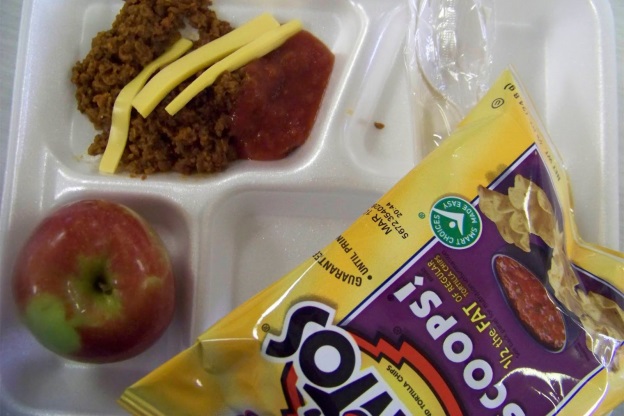
No lunch for you!
There was a story in the news recently that goes something like this:
When a 12-year-old Texas boy went to eat breakfast this week at his middle school a cafeteria worker took away the meal and tossed it in the trash — all because his meal account was 30 cents short.
This didn’t happen in Minnesota, it happened in Texas, but similar things have apparently happened in Minnesota as well:
… a report found Minnesota students who forget their lunch or can’t afford to pay for one are sometimes refused a meal altogether. In the worst cases, children are forced to dump the contents of their hot lunch in the garbage.
How a policy like this even gets thought of, let alone approved of by adults and then carried out by adults is completely beyond the pale. Thankfully now that this is a thing that people know about, it seems as though changes are coming:
Minnesota Gov. Mark Dayton plans to include $3.5 million in his supplemental budget so students cannot be denied a hot meal at lunchtime.
…
“No child in Minnesota should be denied a healthy lunch,” Dayton said in a prepared statement. “We cannot expect our students to succeed on an empty stomach.”
No doubt this is an important issue. Kids should not have to worry about whether they have enough money in their accounts for breakfast or lunch, and then when they don’t have enough money, they should certainly not have their food dumped into the trash in front of everyone. As if it’s somehow the kids fault.
But it’s not just access to breakfast and lunch that is important. As important is what those meals consist of. And what those meals consist of is usually not good:
An increasingly cozy alliance between companies that manufacture processed foods and companies that serve the meals is making students — a captive market — fat and sick while pulling in hundreds of millions of dollars in profits. At a time of fiscal austerity, these companies are seducing school administrators with promises to cut costs through privatization. Parents who want healthier meals, meanwhile, are outgunned.
It’s not just giving kids access to meals at school that is an issue, it’s giving kids access to healthy meals at school. Because what they are being fed right now, more often than not, is far from a healthy meal.
This legislative session a group called the Minnesota Food Council Network will be pushing the legislature for passage of the Minnesota Food Council bill which would establish a Minnesota Food Council. What would be the mission of a Minnesota Food Council?
To inform, organize and facilitate communication between all food system stakeholders to create a socially, economically, and ecologically sustainable food system that promotes health: the current and future health of individuals, communities, and the natural environment.
Giving kids guaranteed access to meals at school is a great thing. But that thing should also be coupled with an instrument in which to get better food into student meals. If all that is done is to guarantee kids have access to the current school food system than all we’re doing is subsidizing the food companies that are supplying sub-par food in the first place.
And while the Minnesota Food Council bill would not specifically address that issue, it would provide the framework within which issues like that, as well as other issues concerning a healthy and sustainable food system, can be addressed.
For more info about the Minnesota Food Council Network, check out: MNFoodCouncilNetwork.org
Thanks for your feedback. If we like what you have to say, it may appear in a future post of reader reactions.


